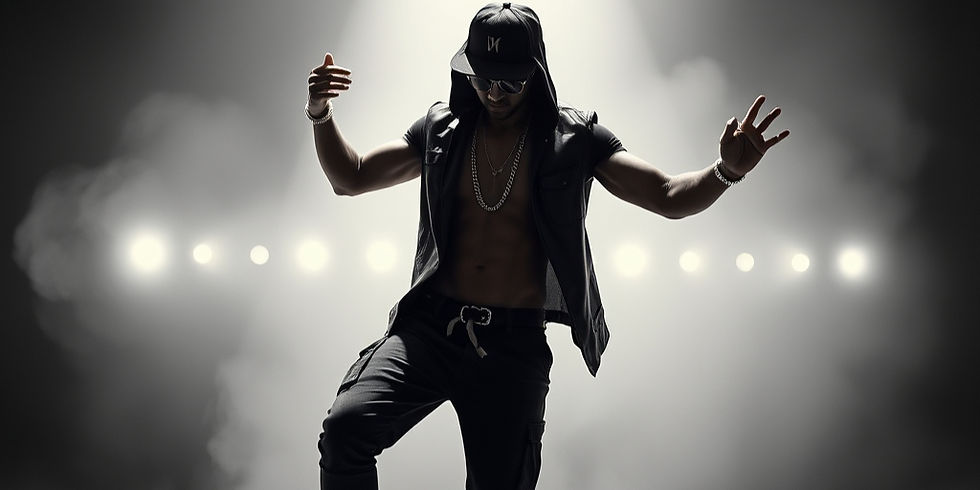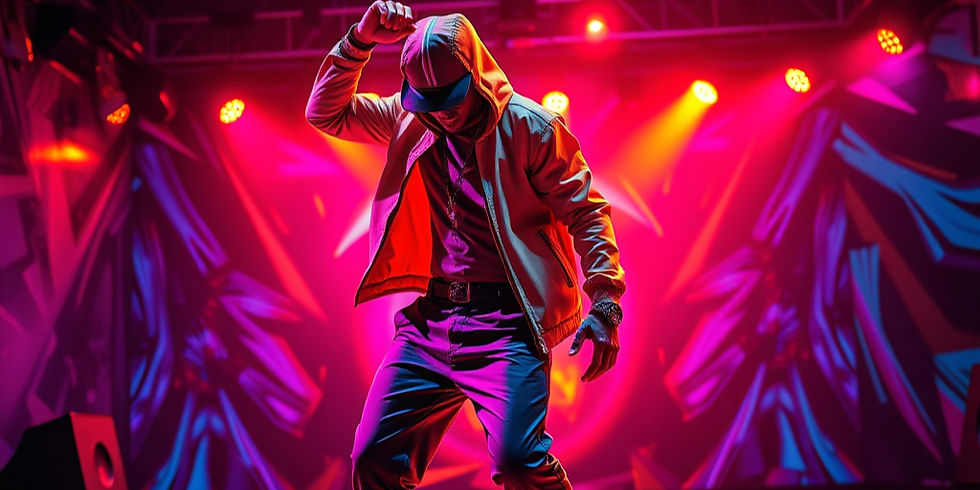From the Streets to the World: The Evolution and Global Influence of Hip Hop and Street Dance
- Feb 20, 2023
- 3 min read
Hip hop and street dance have become a global phenomenon, with dancers from all over the world showcasing their skills and creativity. These styles of dance have a rich history and have evolved over time to become a cultural force that has influenced music, fashion, and even politics.
Hip hop dance originated in the South Bronx in the 1970s, as a form of expression for African American and Latino youth. It was a way to reclaim public spaces and express their cultural identity in a society that often marginalized them. Early hip hop dance styles included breaking, locking, and popping, which were characterized by acrobatic moves, precise footwork, and rhythmic body isolations.

As hip hop dance gained popularity, it began to be featured in music videos, movies, and television shows. Dancers like Michael Jackson, Janet Jackson, and Rihanna incorporated hip hop dance into their performances, further popularizing the style. In the 1990s, hip hop dance became a mainstream phenomenon, with the emergence of commercial hip hop artists like MC Hammer, Vanilla Ice, and Tupac Shakur.
Today, hip hop dance is a thriving industry, with a wide range of styles and techniques. It has also become a platform for social and political activism, with dancers using their art to address issues like police brutality, racism, and inequality. Hip hop dance has also been incorporated into academic curriculums, with universities offering degrees in hip hop studies and dance.
Street dance, which encompasses a range of styles including hip hop, breaking, popping, locking, and house, has also gained popularity in recent years. Street dance originated in urban communities as a form of self-expression and has since been embraced by dancers and audiences around the world. Street dance has become a competitive sport, with events like the World Hip Hop Dance Championship, World of Dance and the Red Bull BC One showcasing the best dancers from around the globe.
Important personalities in the hip hop and street dance world include pioneers like DJ Kool Herc, Afrika Bambaataa, and Grandmaster Flash, who helped to lay the foundation for hip hop culture. Choreographers like Dave Scott, Fatima Robinson, and Wade Robson have created iconic dance routines for music videos and live performances. Dancers like Misty Copeland, Les Twins, and Twitch (R.I.P.) have become household names, inspiring generations of dancers with their talent and creativity.

Commercial influences have also played a significant role in the development of hip hop and street dance. Television shows like So You Think You Can Dance, World of Dance and America's Best Dance Crew have provided a platform for up-and-coming dancers to showcase their skills and gain exposure. Movies like Step Up and You Got Served have brought street dance to the mainstream, inspiring a new generation of dancers.
In recent years, hip hop dance has become a global phenomenon, with dancers and choreographers from all over the world showcasing their skills and creativity. The popularity of hip hop dance has helped to increase the value of the hip hop industry, with music and fashion brands partnering with dancers and choreographers to promote their products.
Hip hop culture has also become a valuable export, with countries around the world embracing the music, fashion, and dance styles of hip hop. The global value of hip hop culture is estimated to be in the billions of dollars, with hip hop artists and brands contributing to the growth of the industry.
In addition to its commercial value, hip hop dance has also become a powerful tool for social and political activism. Dancers and choreographers have used their art to address issues like police brutality, racism, and inequality, shining a light on important social issues and inspiring change.
In conclusion, the evolution of hip hop and street dance has been remarkable. From its origins in marginalized communities to its current status as a global phenomenon, these styles of dance have had a significant impact on music, fashion, and society as a whole. They have become a platform for social and political activism, bridging gaps between different communities and bringing people together through the power of dance.
Hip hop and street dance have also become important industries, creating jobs and opportunities for dancers, choreographers, and other professionals. These industries have contributed to the growth of the entertainment and fashion industries, creating a multi-billion-dollar global market.
As hip hop and street dance continue to evolve and adapt, they will continue to play an important role in society. They will continue to inspire new generations of dancers and push the boundaries of what is possible in terms of creativity and artistry. The future of hip hop and street dance is bright, and we can expect to see these styles of dance continue to have a profound impact on music, fashion, and society for years to come.













Comments